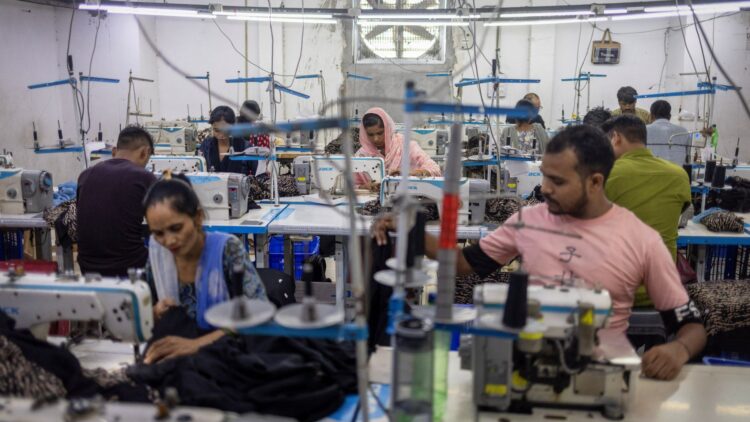In his wave of tariffs, Trump recently announced one that directly impacts India’s apparel export trade to the United States. Traders who previously viewed the country as an opportunity to expand their businesses and profit from it now find themselves having to rethink their activities to mitigate the costs arising from Trump’s imposition.
Impacts of Trump tariff on Indian garment sector
Ever since Donald Trump’s tariff salvo on India this week, garment maker Pearl Global – whose U.S. client list includes Gap and Kohl’s – has been receiving midnight panic calls with an ultimatum: share the tariff hit or move production out of India. To calm U.S. customers’ nerves, Pearl Global PGIL.NS has offered to shift production to its 17 factories in Bangladesh, Indonesia, Vietnam and Guatemala to bypass the steep U.S. levies on Indian imports.
“All the customers are already calling me. They want us to … shift from India to the other countries,” Managing Director Pallab Banerjee told Reuters in an interview. Trump’s initial tariff proposals in April – which were lower for India than for the rival Asian garment hubs of Bangladesh, Vietnam and China – had been seen as an opportunity for India to rapidly expand in the $16 billion apparel exports market.
But the tables have turned as relations between New Delhi and Washington have soured, with India now facing a 50% tariff, versus 20% for Bangladesh and Vietnam, and 30% for China. Pearl gets roughly half of its business from the United States.
With the considerable increase of 50%, many buyers began to encourage their Indian suppliers to move production to Asian or Latin American countries, which has been a strategy to avoid additional costs but harming local producers who do not have this alternative in a financially viable way.
Industry reaction and search for alternatives outside India
The 50% U.S. tariff – comprising 25% that kicked in on Thursday and another 25% due to come into force on August 28 as a penalty for buying Russian oil – has stunned U.S. garment buyers and their Indian suppliers, who say they are considering taking their manufacturing operations beyond Indian shores, even to less-established garment hubs like Ethiopia and Nepal.
Domestic challenges and risks for the “Make in India” policy
In addition to tariff pressure, the sector faces structural problems such as labor shortages and limited production capacity. The threat of operations being relocated to countries like Nepal and Ethiopia challenges domestic industrial growth and jeopardizes the Indian government’s efforts to promote the country as a global textile manufacturing hub.
India’s garment sector was already grappling with a labour crunch and limited production capacity. But the prospect of exporters shifting production outside India would also be a blow to Prime Minister Narendra Modi’s “Make in India” policy drive. While Pearl can use its foreign factories to meet U.S. orders, exporters that rely on domestic factories are set to be hit much harder.
Indian companies consider international expansion to maintain US market share
RichaCo Exports has shipped $111 million of garments to the U.S. this year, with clients such as J. Crew Group, customs data shows. All were made in its more than two dozen factories across India. Around 95% of its annual Indian revenues come from the United States, said general manager Dinesh Raheja.
“We’re exploring setting up a manufacturing base in (Nepal’s capital) Kathmandu,” he said. “The industry is in the doldrums.”
Given the current situation, exporters dependent on the American market are considering establishing production bases in other countries to avoid high taxes. This strategy, while potentially preserving contracts and revenue, represents a setback for national industrial growth and requires investment in new supply chains and logistics.
GCN.com/Reuters


